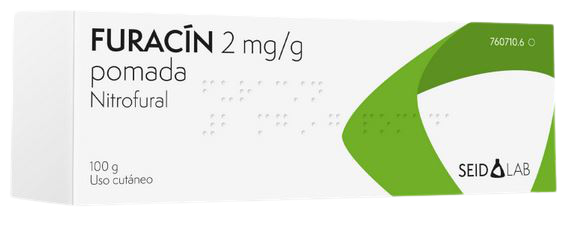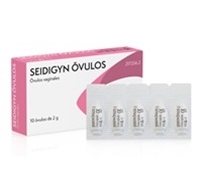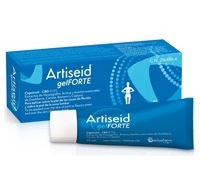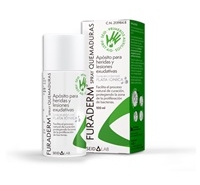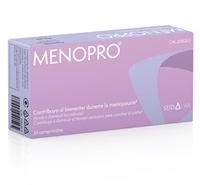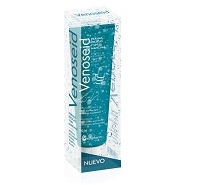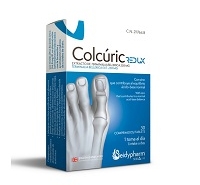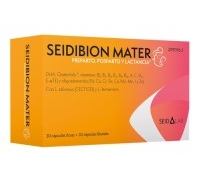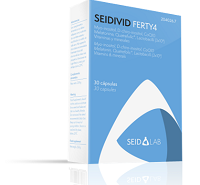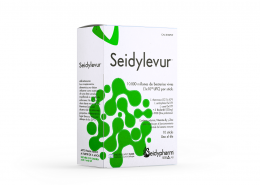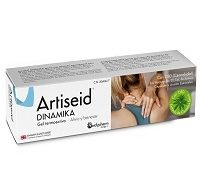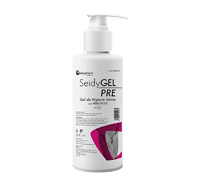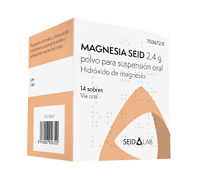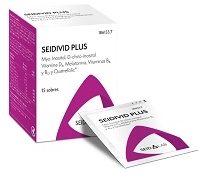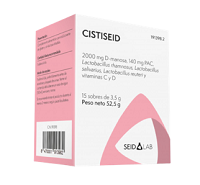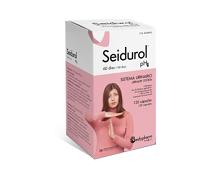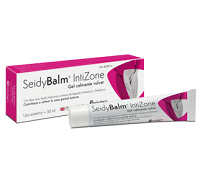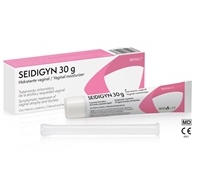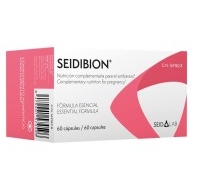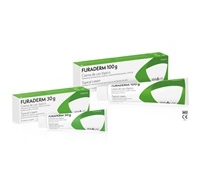4.1 Therapeutic indications
Furacin 2 mg/g ointment is indicated in adults.
Local application as an alternative treatment for second- and third-degree burns.
Skin infections. Preparation of skin graft surfaces, where bacterial contamination can cause graft rejection or infection at the donor site, especially in hospitals with a history of bacterial resistance.
4.2 Posology and method of administration
Topical use.
Apply directly to the lesion or spread on a sterile gauze first; apply once a day or every few days, depending on the dressing technique.
If the symptoms get worse or do not improve after 3 days of treatment, the clinical situation should be evaluated.
For elderly patients, see section 4.4.
There is no experience in children, see section 4.4.
4.3 Contraindications
Hypersensitivity to the active substance or to any of the excipients.
4.4 Special warnings and precautions for use
There may be overgrowth of non-susceptible organisms, including fungi or Pseudomonas, resulting in secondary infection (see section 4.8).
Treatment should be discontinued and the patient should be advised to contact their doctor in case of overgrowth, secondary infection, irritation or sensitisation reactions.
Renal impairment
Due to its content of macrogols as excipients, Furacin should be administered with caution to patients with known or suspected renal dysfunction, as they may be absorbed through the skin and their accumulation may result in symptoms of progressive renal impairment, such as increased BUN (blood urea nitrogen), high anion gap and metabolic acidosis (see section 4.8).
Paediatric population
The safety and efficacy of nitrofurazone in children have not been established. No appropriate studies have been conducted in children on the relationship between the effects of nitrofurazone and age.
Elderly
Elderly patients are likely to have age-related deterioration of renal function, which may require an adjustment of the nitrofurazone dose. No studies have been conducted in elderly patients on the relationship between age and the effects of nitrofurazone.
Warnings about excipients
Due to the presence of macrogols (polyethylene glycols) as excipients, caution is required in patients with renal dysfunction, as they may be absorbed through the skin and cause symptoms of progressive renal impairment (see Patients with renal impairment, above).
4.5 Interaction with other medicinal products and other forms of interaction
No interaction studies have been performed.
4.6 Fertility, pregnancy and lactation
Fertility
There are no data regarding the possible effects of nitrofurazone on fertility.
Pregnancy
There are no or limited amount of data on the use of nitrofurazone in pregnant women. Animal studies are insufficient with respect to reproductive toxicity (see section 5.3).
Furacin is not recommended during pregnancy unless the potential benefit justifies any potential risk to the foetus.
Breast-feeding
It is unknown whether nitrofurazone is excreted in human milk. A risk to the new-borns/infants cannot be excluded. A decision must be made whether to discontinue breast-feeding or to discontinue/abstain from Furacin therapy, taking into account the benefit of breast-feeding for the infant and the benefit of therapy for the woman.
4.7 Effects on ability to drive and use machines
This medicine has not been reported to have any effect on the ability to drive and use machines.
4.8 Undesirable effects
Skin and subcutaneous tissue disorders
Common (³1/100 to <1/10): approximately 1% of patients may experience contact dermatitis (redness, itching, rash, swelling, etc.).
Frequency not known (cannot be estimated from the available data): opportunistic mycoses could also occur (see section 4.4).
Renal and urinary disorders
Frequency not known (cannot be estimated from the available data): symptoms of progressive renal impairment such as increased BUN (blood urea nitrogen), high anion gap and metabolic acidosis may occur in case of build-up of macrogols (excipients) in patients with renal dysfunction (see section 4.4 Special warnings and precautions for use).
If adverse reactions are observed, they should be reported via the Pharmacovigilance systems and, if necessary, treatment should be discontinued.
4.9 Overdose
In individuals with normal renal function, applying the product topically is unlikely to result in overdose.
In case of accidental ingestion, bear in mind that nitrofurazone is toxic when administered orally, and adverse effects include severe peripheral neuropathy; haemolysis may occur in patients with glucose-6-phosphate dehydrogenase deficiency.
Accidental ingestion is unlikely due to the appearance and taste of Furacin, and the amount of nitrofurazone ingested is not likely to cause toxicity.
If necessary, symptomatic treatment should be given.

